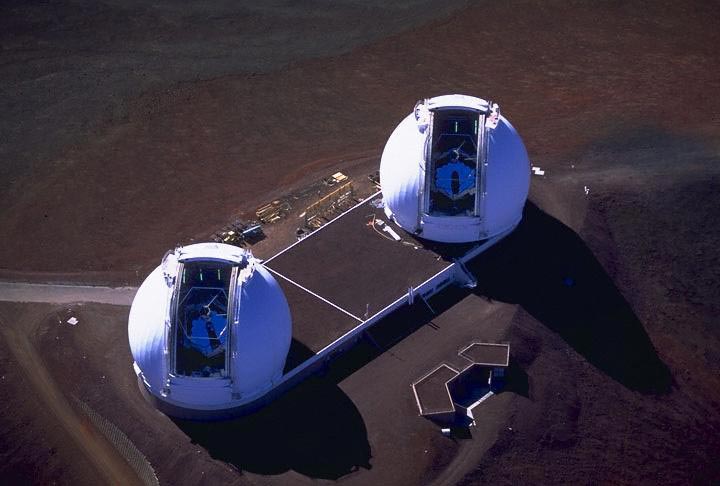Very Long Baseline Interferometry, or VLBI, is a powerful technique in radio astronomy. By linking together widely separated radio telescopes, VLBI allows astronomers to see the universe in more detail than ever. With radio dishes that are effectively as large as entire countries, we can peer into the hearts of black holes, map the surfaces of stars, and even track the drift of continents right here at home.

One of things that limits how much detail you can see through a telescope is the size of the primary mirror (or in a refracting telescope, the size of the objective lens). The same is true with radio telescopes, only instead of a mirror, they use large sheets of metal to focus radio waves from deep space. The bigger the mirror, lens, or antenna, the more detail you’ll be able to see. This is one of the reasons that astronomers are forever in a race to build bigger and bigger telescopes.
The diameter of that all-important mirror limits what you can see. Sometimes, when I set a telescope up on a sidewalk and point it at the moon, passers-by ask if they can see the Apollo landers. When I point out that, no, we would need a much larger telescope to do that, they frequently ask if something like the Hubble Space Telescope could do it. That’s powerful enough, right?
The truth is, there is no telescope anywhere on Earth that can image the lunar modules sitting on the moon’s surface. To do that, you would need a telescope with a mirror roughly 60 meters (200 feet) across! That’s just a bit smaller than a 747. Hubble, on the other hand, has a mirror a mere 2.4 meters in diameter. The largest telescopes on the planet have 10 meter mirrors.
So clearly, bigger telescopes are better. And there are telescopes in the works with mirrors that are an impressive 30 meters across. But at some point, it becomes impractical. This is where the science of interferometry can help!
If you place two telescopes 100 meters apart and combine their light, you can see the same amount of detail as a single 100 meter wide telescope! Two telescopes working in tandem like this are called an “interferometer” – they use the interference of light waves from the two telescopes to unravel exquisitely fine detail.

With optical or infrared light, the telescopes in an interferometer must be physically connected through a series of tubes called “delay lines”. Using radio telescopes, however, allows astronomers to record the signals from the antennae and then combine the light in computers at some later time. This offers a huge advantage: there is no limit to the distance between the telescopes!
VLBI can combine the light from radio telescopes placed on opposite sides of the world. One of the largest systems is the appropriately named Very Long Baseline Array (VLBA). Ten telescopes – stretching from Hawai’i to the Virgin Islands – all work together to create a radio telescope that is more than half the size of Earth! When brought together, all ten telescopes steer to the same distant object, combine the data in powerful computers with the aid of phenomenally precise atomic clocks, and see the cosmos in greater detail than ever before.

Since the telescopes don’t need to be physically connected, the sky is truly the limit in terms of telescope placement. Imagine placing one in orbit around Earth! Or launching a flotilla of radio telescopes into space to work as a single interferometer several times larger than our planet. And if you really want to dream big, why not place some telescopes on the Earth while placing others on the far side of the Moon? You would then have a quarter of a million miles wide radio telescope! The resolving power of such a setup would be the equivalent of standing in Los Angeles and reading a newspaper placed in Washington, D.C.
VLBI is a versatile tool. The techniques that allow it to trace the motions of gas in distant galactic clusters can also be used to record the motions of our own planet. If two telescopes on opposite sides of a continent are both pointing at the same distant quasar, for example, the light from the quasar will reach one telescope before it reaches the other. With precise clocks, you can use that time delay to accurately measure the distance between the telescopes. Do that repeatedly, and you can monitor how that distance changes over time. Remarkably, geologists can use radio signals from quasars billions of light-years away to watch the slow drift of tectonic plates!
Very Long Baseline Interferometry – VLBI – is a phenomenally complex but powerful tool. By linking together radio telescopes from around the world, astronomers can see the Universe in unprecedented detail. VLBI networks have studied exploding stars and powerful gas jets driven by supermassive black holes in the hearts of galaxies. And that same technology lets us peel away the inner structure of our planet and determine our orientation in space.
What will the next generation of ever larger VLBI networks reveal about the distant Universe or even the ground beneath our feet?











